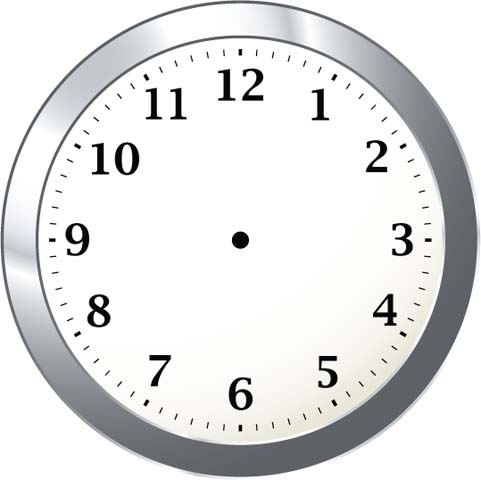
Display Title
Math Clip Art--Clock Art--Blank Clock Face
Display Title
Blank Clock Face

Topic
Time Measurement
Description
This image features a blank clock face, which serves as an essential tool for teaching the concept of time measurement. The absence of numbers allows educators to customize the clock face with various time markers, enhancing students' understanding of time intervals and clock reading.
Using this image, teachers can create interactive lessons where students fill in the numbers or practice setting the clock hands to specific times. This hands-on approach fosters engagement and reinforces learning.
Math clip art, like this blank clock face, is crucial in teaching math because it provides visual aids that simplify complex concepts. Visual learning aids help students grasp abstract ideas more concretely, making math more accessible and enjoyable.
Teacher's Script: "Students, let's explore how a clock works by using this blank clock face. Imagine where the numbers should be and practice setting the time. This will help you become more familiar with reading clocks."
For a complete collection of math clip art related to Telling Time click on this link: Clock Face Collection.
Telling Time
To review telling time, watch this video. (The transcript is also included.)
Video Transcript
When you look at a clock, you can read the hour and the minutes.
Here is a blank clock face.
Let's start by looking at the hour hand.
It is the shorter of the two clock hands and looks like this.
The hour hand varies in value from 1 to 12.
Here is a tour of times around the clock using the hour hand.
12 o'clock.
1 o'clock.
2 o'clock.
3 o'clock.
4 o'clock.
5 o'clock.
6 o'clock.
7 o'clock.
8 o'clock.
9 o'clock.
10 o'clock.
11 o'clock.
And back to 12 o'clock.
The minute hand is the longer of the two clock hands.
This is what it looks like.
The minute hand varies in value from 0 to 60.
Here is a tour of times around the clock in 5-minute increments.
5 minutes after the hour.
10 minutes after the hour.
15 minutes after the hour.
20 minutes after the hour.
25 minutes after the hour.
30 minutes after the hour.
35 minutes after the hour.
40 minutes after the hour.
45 minutes after the hour.
50 minutes after the hour.
55 minutes after the hour.
0 minutes after the hour.
Telling time involves reading both the hour and minute hand.
Here are some examples.
This is 12 o'clock. Both the hour and minute hands point to 12.
This is 12:15. The hour hand is a bit past 12 and the minute hand points to 3.
This is 12:30. The hour hand is between 12 and 1, and the minute hand points to 6.
This is 12:45. The hour hand is closer to 1 and the minute hand points to 9.
This is 1 o'clock. The hour hand points to 1 and the minute hand points to 12.
This pattern repeats for every hour and minute.
The Hour Hand
When you look at a clock, you can read the hour and the minutes. Here is a blank clock face.
Let’s start by looking at the hour hand. It is the shorter of the two clock hands and looks like this.
The hour hand varies in value from 1 to 12. Here are some sample times using the hour hand.
The Minute Hand
The minute hand is the longer of the two clock hands. This is what it looks like.
The minute hand varies in value from 0 to 60. Here are some sample times using the minute hand.
| Common Core Standards | CCSS.MATH.CONTENT.1.MD.B.3, CCSS.MATH.CONTENT.2.MD.C.7, CCSS.MATH.CONTENT.3.MD.A.1 |
|---|---|
| Grade Range | K - 2 |
| Curriculum Nodes |
Arithmetic • Measurement • Time |
| Copyright Year | 2014 |
| Keywords | clocks, time, time measurement, telling time |